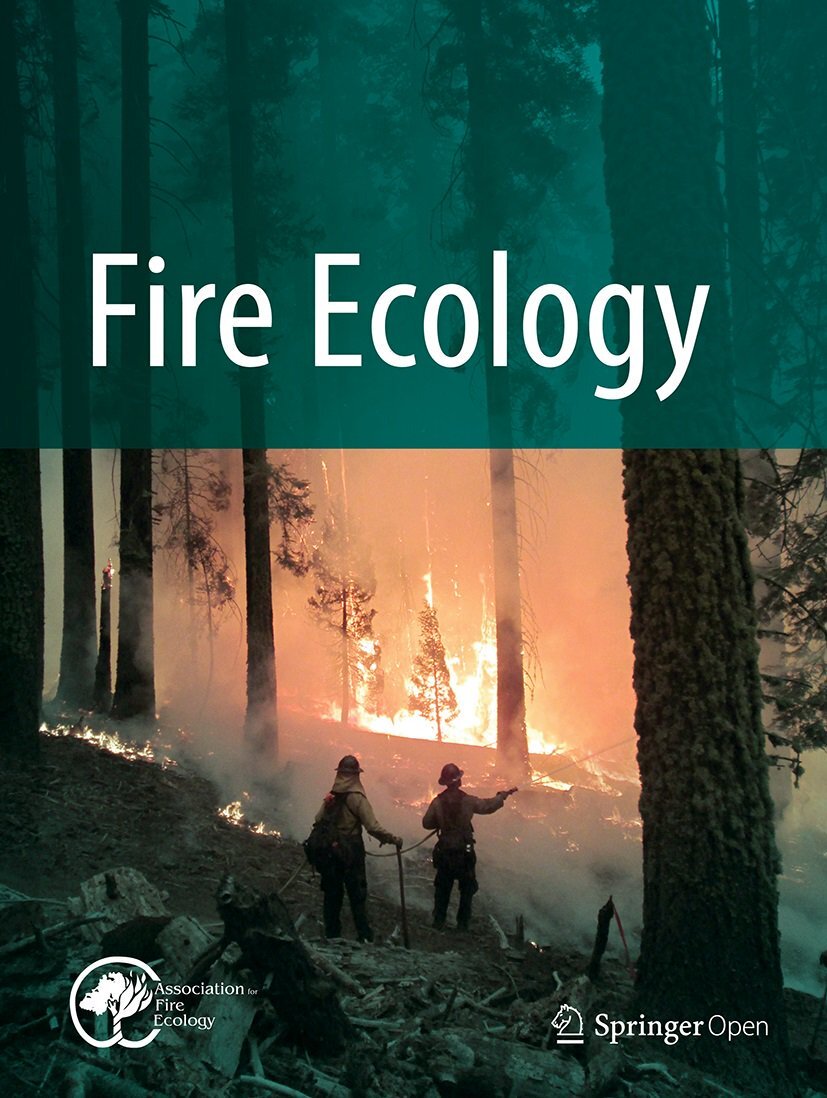research Highlight: Fire versus herbivory for oak woodland restoration: burning achieves short-term structural and compositional objectives whereas browsing alone fails to reduce stem densities and promote ground flora
Authors: Gina R. Beebe, Lauren S. Pile Knapp, Michael C. Stambaugh, Daniel C. Dey, Brian Davidson, Dacoda Maddox & John M. Kabrick
This research highlight summarizes an article recently published in Fire Ecology that examines herbivory as a supplement to prescribed fire in the Missouri Ozarks where fire use can be limited.
Declines in fire lead to midstory densification
In many upland oak/hickory woodlands of the Missouri Ozarks, the decline in ecologically beneficial fires, coupled with changes in native herbivory and intensive land use, has resulted in significant shifts in woodland structure and composition. This has led to midstory densification and decreased abundance and diversity of ground flora. Although prescribed burns are effective at meeting woodland management goals, their use can be limited for various reasons, including smoke drift, proximity to infrastructure, and implementation challenges associated with weather and seasonality.
Why goats?
Targeted herbivory has the potential to mimic many aspects of prescribed fire, thereby diversifying management strategies for restoration. Unlike prescribed fire, targeted herbivory can occur at any time, providing greater flexibility in management timelines. In this study, goats were specifically chosen because they are browsing animals capable of digesting lignin-rich plant species, making them well-suited for woodland management. Additionally, goats can stand on their hind legs and browse leaves and buds up to 2 meters off the ground. Their nimble upper lips enable them to browse thorny species, such as blackberry (Rubus spp.) and multiflora rose (Rosa multiflora).
Study design and browsing management
Our study, conducted in an oak/hickory woodland in the Missouri Ozarks included six treatments: (1) spring browsing, (2) fall browsing, (3) dormant-season and fall browsing, (4) dormant-season prescribed fire, (5) spring browsing plus dormant-season prescribed fire, and (6) an untreated control.
The browsing treatments mimicked mob browsing, characterized by a high stocking rate of goats in each experimental unit for a short period. Due to variability in treatment unit and herd size, a browsing threshold was established to maintain a consistent browsing level across all replications and treatment units. When approximately 85% of all vegetation was browsed across an experimental unit, goats were removed.
Fire is more effective than browsing for woody stem reduction
The results suggest that fire had an overriding effect on the reduction of midstory stems that was not comparable to the browsing treatments. Burning reduced leaf litter and increased bare soil exposure and forb coverage. While browsing may decrease the accumulation of woody stems compared to the control group, this effect was not statistically significant. Differences in browsing seasonality and frequent browsing were also not statistically important but trends suggest a greater influence of spring browsing for meeting woodland objectives. Browsing may also exert compositional changes to woodlands because of forage preferences by goats.
Conclusions:
To achieve woodland objectives in the short-term, fire is necessary to quickly reduce midstory densities, increase light availability, and consume leaf litter, thereby promoting the abundance and diversity of ground flora. These outcomes may not be achieved through targeted browsing alone. Further, the interaction between fire and herbivory suggests that browsing preferences may influence structural and compositional outcomes associated with pyric herbivory regimes in woodlands that require further investigation.
Key Messages:
Fire is more effective than browsing in reducing stem densities and leaf litter while increasing bare soil exposure and forb coverage.
The compounding disturbance of browsing with burning enhances reductions in woody stems but browsing preferences create additional species filters that are not apparent with burning alone.
While not statistically significant, results and field observations suggest that targeted browsing practices may suppress the accumulation of woody stems.
Spring browsing may have a greater impact on woody stems and may increase the coverage of grasses than when browsing occurs later in the growing season.



